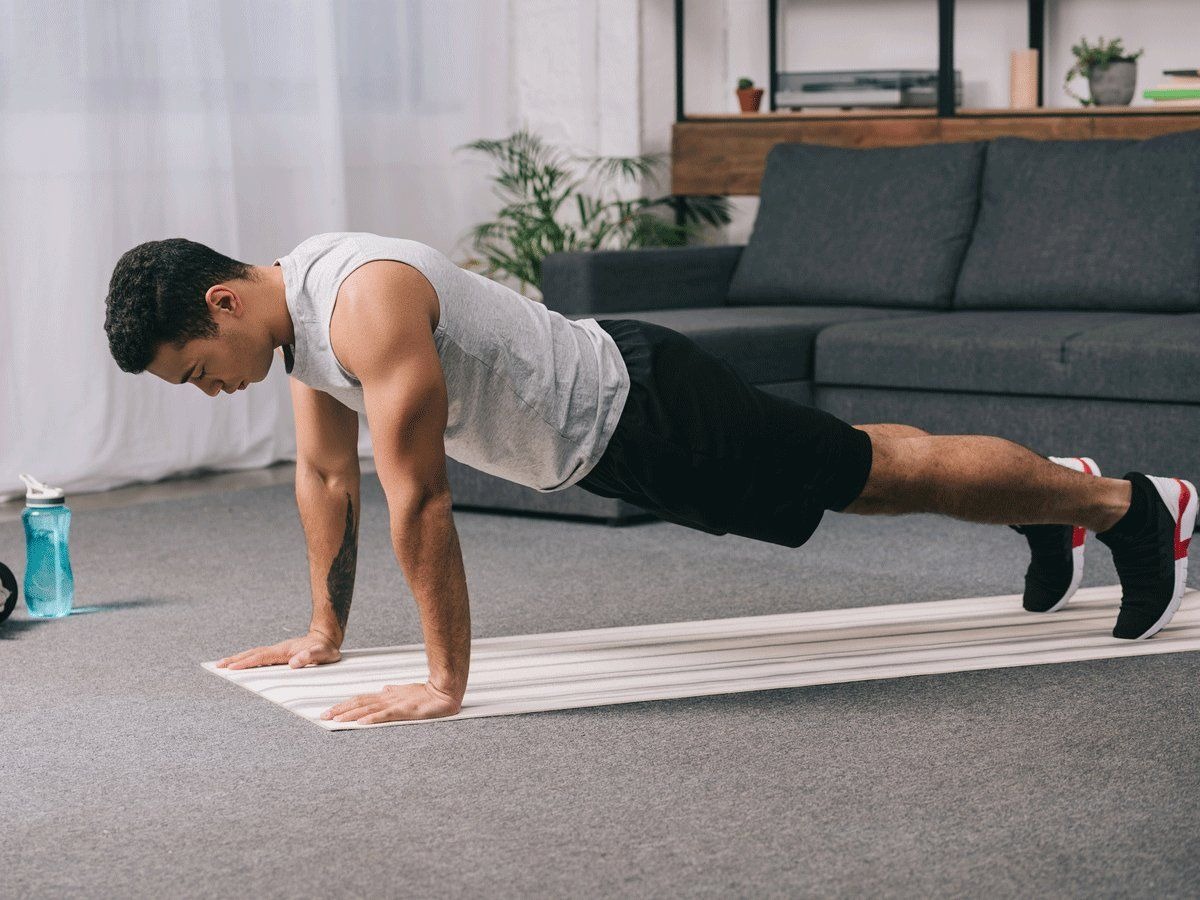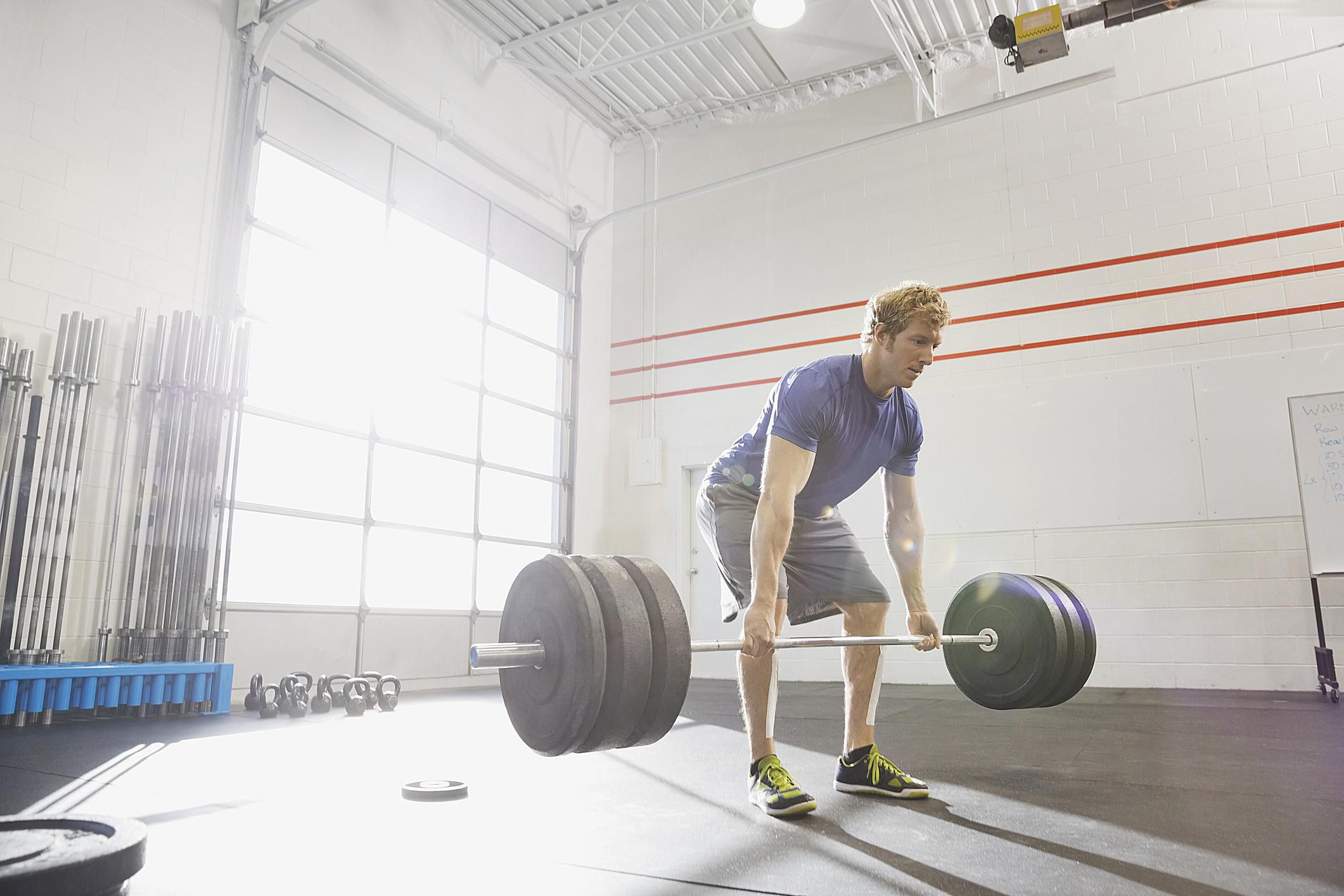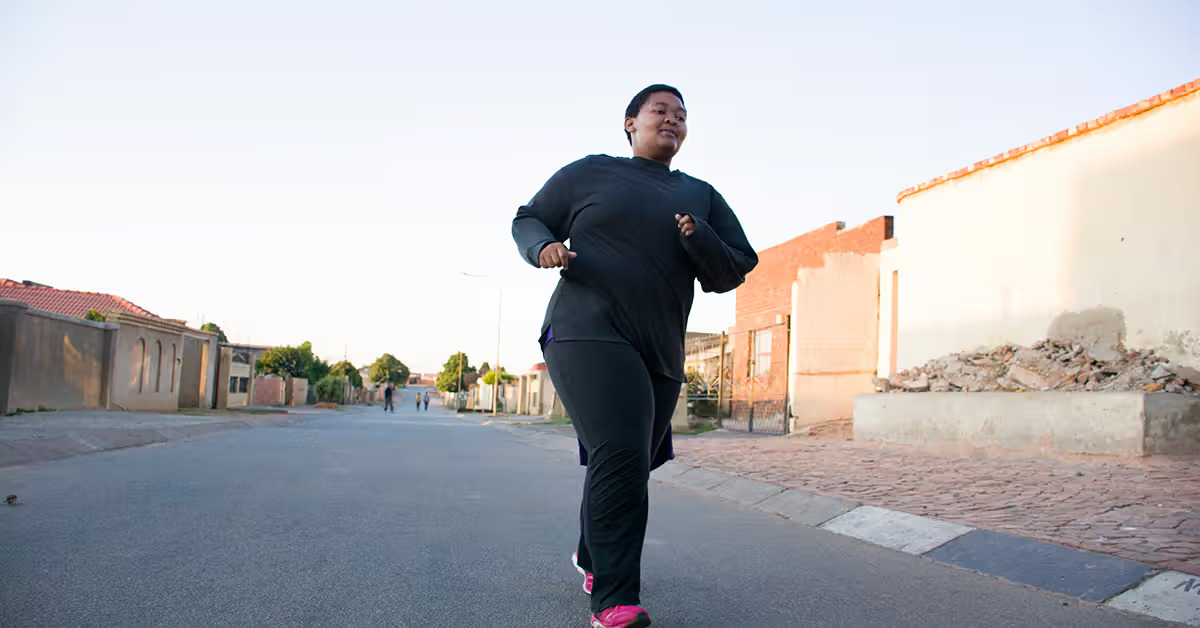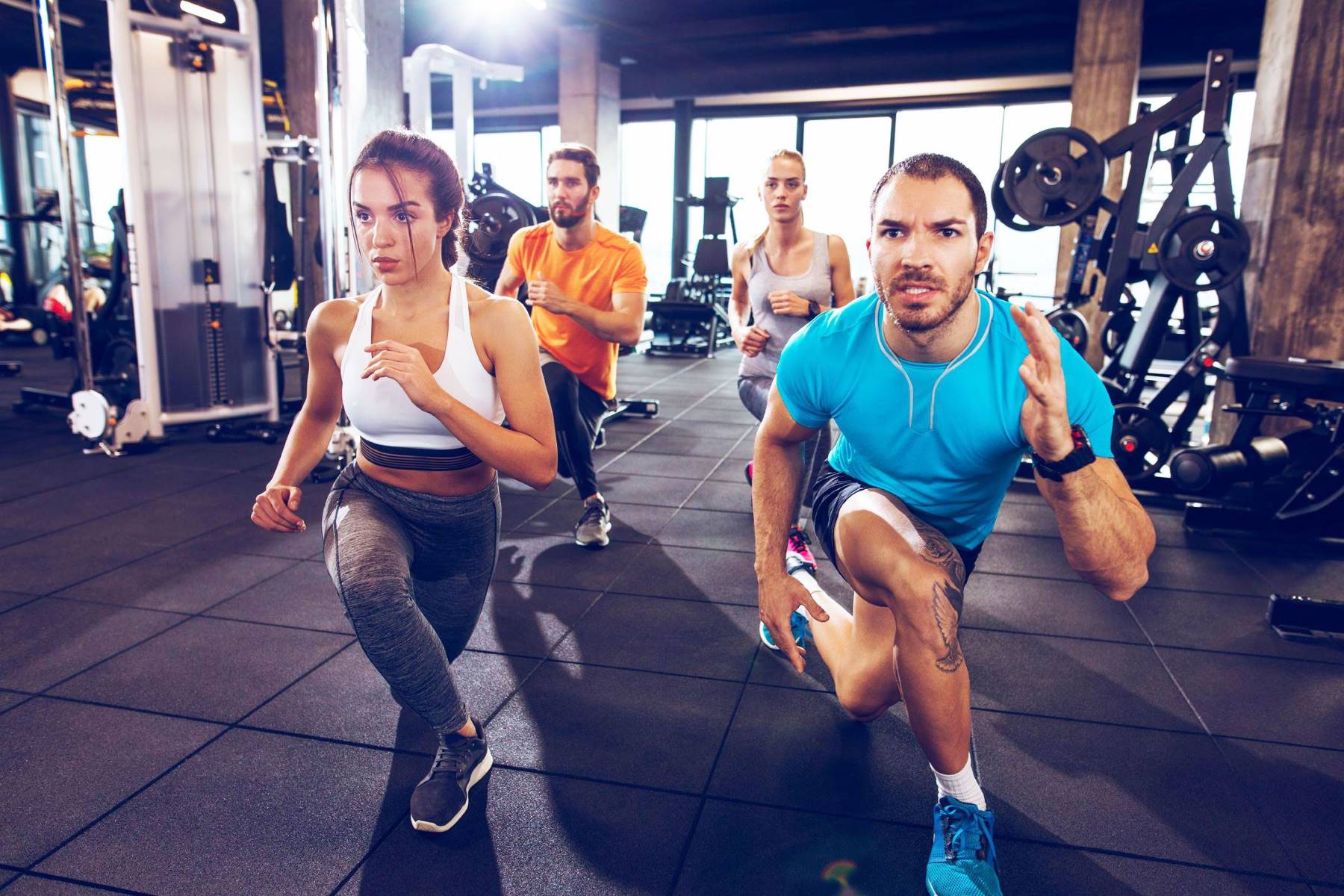

Featured
What Are Push-Ups Exercise
Published: October 8, 2023
"Discover the benefits and muscle groups targeted by push-ups with our comprehensive guide. Improve your strength and fitness with this featured exercise."
Introduction
Welcome to the world of push-ups, one of the most effective and versatile exercises you can do to strengthen your upper body. Whether you’re a fitness enthusiast looking to add variety to your workout routine or a beginner aiming to build strength, push-ups can be a game-changer in your physical fitness journey.
Push-ups are a classic bodyweight exercise that engage multiple muscle groups and provide a host of benefits. Unlike other traditional exercises that require fancy equipment or gym memberships, push-ups can be performed anywhere, anytime, using just your body weight. They are a true testament to the power of simplicity in fitness.
In this article, we will explore the many benefits of push-ups, the specific muscles they target, the importance of proper form, different variations you can try, common mistakes to avoid, and essential tips for injury prevention. So, let’s dive in and discover the incredible world of push-ups.
Whether you’re an athlete, a fitness enthusiast, or someone new to exercise, push-ups can be a valuable addition to your workout routine. They are a compound exercise, meaning they involve multiple joints and muscle groups simultaneously, making them incredibly efficient for building functional strength and improving overall fitness. No matter your fitness level, push-ups can be modified to suit your needs, allowing you to progressively challenge yourself and see noticeable improvements over time.
So, if you’re ready to take your upper body strength to new heights, tighten and tone your muscles, and boost your overall fitness level, let’s get started on this push-up adventure!
Benefits of Push-Ups
Push-ups offer a multitude of benefits for your physical fitness and overall well-being. Let’s explore some of the key advantages:
- Strengthens the upper body: Push-ups primarily target the muscles in your chest, shoulders, and arms, including the pectoralis major, deltoids, triceps, and biceps. By consistently performing push-ups, you can build strength in these areas and enhance your upper body muscular endurance.
- Improves core stability: While push-ups are primarily known as an upper body exercise, they also engage your core muscles. The abdominal muscles, obliques, and lower back muscles work together to stabilize your body during the movement, helping you maintain proper form and balance.
- Enhances functional strength: Push-ups mimic movements used in everyday activities and sports, making them a functional exercise. By strengthening the muscles involved in pushing and pressing motions, push-ups can improve your performance in various physical activities and tasks, such as lifting objects, carrying groceries, or playing sports.
- Boosts metabolism: Push-ups are a compound exercise that engages multiple muscles simultaneously. This increased muscle activation leads to a higher caloric expenditure during the exercise and can help boost your metabolism. Regularly incorporating push-ups into your workout routine can contribute to weight management and fat loss.
- Requires no equipment: One of the biggest advantages of push-ups is their accessibility. You can perform them anywhere, anytime, without the need for any expensive equipment or a gym membership. All you need is a flat surface and your own body weight, making push-ups a cost-effective and convenient exercise option.
- Improves posture: Push-ups require a straight and aligned body position, which helps improve your posture over time. The exercise targets the muscles responsible for maintaining proper alignment, such as the upper back, shoulders, and core muscles. By strengthening these muscles, push-ups can help counteract the negative effects of a sedentary lifestyle and promote better posture.
These are just a few of the many benefits that push-ups offer. With consistent practice and proper form, push-ups can help you achieve a stronger, fitter, and healthier body.
Muscles Targeted by Push-Ups
Push-ups are a compound exercise that engage multiple muscle groups in the upper body, strengthening and toning them. Let’s take a closer look at the muscles targeted by push-ups:
- Chest (Pectoralis Major): The pectoralis major muscles, located in the chest, are the primary muscles activated during push-ups. They are responsible for the horizontal adduction of the arms and play a crucial role in pushing movements.
- Shoulders (Deltoids): The deltoids, or shoulder muscles, are also heavily recruited during push-ups. They assist in the movement of the arms and help stabilize the shoulders during the exercise.
- Arms (Triceps and Biceps): Push-ups target both the triceps and biceps, which are the muscles of the upper arm. The triceps, located at the back of the upper arm, are the primary muscles responsible for extending the elbow joint. The biceps, located at the front of the upper arm, assist in the flexion of the elbow joint during the downward phase of the exercise.
- Core (Abdominals and Obliques): Push-ups require stabilization of the core muscles, including the abdominal muscles and obliques. These muscles help maintain a neutral spine position and stability during the movement.
- Back (Latissimus Dorsi and Rhomboids): The back muscles, specifically the latissimus dorsi and rhomboids, play a crucial role in stabilizing the body during push-ups. They are responsible for retracting the shoulder blades and maintaining proper posture throughout the exercise.
- Other muscles: In addition to the major muscle groups mentioned above, push-ups also engage other muscles, including the muscles of the forearm and wrists for grip stability, as well as the muscles of the lower body, such as the quadriceps and glutes, to provide overall body stability during the movement.
By targeting a wide range of muscles in the upper body, push-ups provide a comprehensive workout that can help you develop strength, muscle definition, and improved functional fitness in these areas.
Proper Push-Up Form
Performing push-ups with proper form is crucial to maximize their effectiveness and prevent injury. Follow these guidelines to ensure you are executing push-ups correctly:
- Starting Position: Begin in a plank position, with your hands slightly wider than shoulder-width apart, directly under your shoulders. Your body should form a straight line from your head to your heels.
- Hand and Arm Placement: Most individuals find it comfortable to position their hands with fingers pointing forward, but you can also experiment with variations such as placing your fingers outward or backward. Keep your elbows slightly bent and pointing back, not flared out to the sides.
- Body Alignment: Engage your core muscles by squeezing your abs and glutes to maintain a neutral spine position. Avoid sagging your hips or raising your buttocks too high.
- Full Range of Motion: Lower your body by bending your arms at the elbows, keeping them close to your sides. Lower until your chest is a few inches above the floor or until your form starts to break. Then, push through your hands to return to the starting position. Avoid locking out your elbows at the top of the movement.
- Breathing Pattern: Inhale as you lower your body towards the floor and exhale as you push back up to the starting position. Focus on maintaining a steady breathing rhythm throughout the exercise.
- Proper Tempo: Perform push-ups in a controlled manner, avoiding any sudden jerking movements. Aim for a smooth and controlled descent and ascent, focusing on muscle activation and engagement.
- Modification and Progression: If you’re new to push-ups or find them challenging, start by performing modified push-ups on your knees or against a wall or elevated surface. As you build strength, gradually progress to performing full push-ups on your toes.
Remember, quality over quantity is key when it comes to push-ups. It’s better to do a few push-ups with proper form than to perform a higher number of repetitions with poor technique. Take your time to learn and master the correct form, and gradually increase the intensity and volume of your push-ups over time.
Variations of Push-Ups
Push-ups offer a variety of challenging and exciting variations to target different muscle groups and add diversity to your workout routine. Here are some popular variations of push-ups:
- Wide Arm Push-Ups: Place your hands wider than shoulder-width apart to emphasize the chest muscles even more.
- Close Grip Push-Ups: Bring your hands closer together, directly under your chest, to shift the focus to the triceps and inner chest muscles.
- Diamond Push-Ups: Form a diamond shape with your hands by touching the tips of your index fingers and thumbs. This variation heavily targets the triceps and challenges your upper body strength.
- Decline Push-Ups: Elevate your feet on an elevated surface, such as a bench or step, to increase the difficulty and target the upper chest muscles.
- Incline Push-Ups: Place your hands on an elevated surface, such as a bench or step, with your feet on the ground. This variation is beginner-friendly and emphasizes the lower chest muscles.
- Explosive Push-Ups: Perform push-ups with an explosive movement, pushing your body upwards with enough force to lift your hands off the ground. This variation helps build power and explosive strength.
- One-Arm Push-Ups: Challenge your upper body strength and stability by performing push-ups while balancing on one arm. This variation requires advanced strength and control.
- Push-Up with Leg Raise: Incorporate your lower body by lifting one leg off the ground as you perform push-ups. Alternate legs to target the glutes, hamstrings, and core muscles.
- T push-ups: After completing a regular push-up, rotate your body to the side, lifting one arm towards the ceiling. This variation engages the shoulders, obliques, and stabilizer muscles.
- Clapping Push-Ups: Explosively push your body off the ground with enough force to clap your hands before returning to the starting position. This advanced variation improves power and upper body explosiveness.
These are just a few of the many push-up variations available to challenge and target different muscle groups. Incorporate these variations into your workout routine to add excitement, prevent plateaus, and continually challenge your body.
Common Mistakes in Push-Ups
While push-ups are a highly effective exercise, improper form and technique can minimize their benefits and increase the risk of injury. Avoid these common mistakes to make the most out of your push-up routine:
- Sagging Hips: Allowing your hips to sag towards the ground puts excessive stress on your lower back and reduces the effectiveness of the exercise. Keep your core engaged and maintain a straight line from your head to your heels throughout the movement.
- Flaring Elbows: Allowing your elbows to flare out to the sides rather than keeping them close to your body can strain the shoulder joints. Keep your elbows at a 45-degree angle from your torso to maintain proper shoulder alignment.
- Incomplete Range of Motion: Failing to lower your chest close enough to the ground limits the engagement of the target muscles. Lower your body until your chest is a few inches above the floor or until your form starts to break, and then push back up to the starting position.
- Rounding Upper Back: Allowing your upper back to round forward can compromise your form and reduce the effectiveness of the exercise. Maintain a neutral spine by keeping your shoulder blades pulled together and your chest lifted throughout the movement.
- Improper Hand Placement: Placing your hands too wide or too close together can put unnecessary strain on your wrists, shoulders, and elbows. Position your hands slightly wider than shoulder-width apart, directly under your shoulders, for optimal alignment.
- Incorrect Breathing: Neglecting to breathe properly during push-ups can limit your performance and hinder your progress. Inhale as you lower your body towards the floor and exhale as you push back up, maintaining a steady breathing pattern.
- Skipping Warm-up: Performing push-ups without a proper warm-up can increase the risk of injury. Spend a few minutes engaging in dynamic stretches and light exercises to warm up the muscles before diving into your push-up routine.
- Overtraining: Excessive repetitions or frequency of push-ups without adequate rest can lead to overuse injuries and hinder your progress. Allow your muscles to recover and grow stronger by incorporating rest days into your workout schedule.
- Poor Alignment: Failing to maintain proper body alignment, such as allowing your head to drop or your shoulders to round forward, can strain your neck, shoulders, and back. Keep your head in line with your spine and maintain a strong, stable position throughout the movement.
By addressing these common mistakes and focusing on proper form and technique, you can maximize the effectiveness of your push-ups while minimizing the risk of injury.
Injury Prevention Tips for Push-Ups
While push-ups are generally a safe exercise, it’s important to take precautions to prevent injuries and ensure a safe and effective workout. Consider these tips to minimize the risk of injury during push-ups:
- Warm-Up: Always start your workout with a proper warm-up to prepare your muscles and joints for the exercise. Engage in dynamic movements and light stretching to increase blood flow and flexibility.
- Progress Gradually: If you’re new to push-ups or returning after a hiatus, start with modified push-up variations and gradually work your way up to performing full push-ups on your toes. Progressing too quickly can strain your muscles and joints.
- Focus on Form: Maintain proper form and technique throughout each rep to avoid unnecessary stress on your joints and muscles. Pay attention to your body alignment, hand placement, and breathing pattern.
- Listen to Your Body: Pay attention to any pain or discomfort during push-ups. If you experience sharp or persistent pain, take a break and consult with a healthcare professional. Pushing through pain can lead to further injury.
- Strengthen Supporting Muscles: In addition to your chest, shoulders, and triceps, focus on strengthening the muscles that support these areas, such as the rotator cuff and scapular stabilizers. This can help prevent imbalances and reduce the risk of injury.
- Don’t Neglect Rest and Recovery: Allow adequate time for rest and recovery between push-up sessions. Your muscles need time to repair and rebuild to avoid overuse injuries. Gradually increase the intensity and volume of your workouts to give your body time to adapt.
- Diversify Your Routine: Incorporate other upper body and core exercises into your workout routine to prevent overloading specific muscle groups. This will aid in maintaining balance and reducing the risk of overuse injuries.
- Modify as Needed: If you have existing injuries or conditions that limit your range of motion or strength, modify push-ups accordingly. This may involve performing push-ups on an elevated surface or utilizing resistance bands for assistance.
- Seek Professional Guidance: If you’re unsure about proper form or have specific limitations or injuries, consider working with a qualified fitness professional who can provide guidance and individualized modifications.
By following these injury prevention tips and practicing proper technique, you can enjoy the numerous benefits of push-ups while minimizing the risk of injury and ensuring a safe and effective workout.
Conclusion
Push-ups are an incredibly versatile and effective exercise that can benefit individuals of all fitness levels. By incorporating push-ups into your workout routine, you can strengthen your upper body, improve core stability, enhance functional strength, and boost your overall fitness level. The best part is that push-ups require no equipment, making them accessible to everyone.
Throughout this article, we explored the numerous benefits of push-ups, including upper body strength gains, improved core stability, increased metabolism, enhanced posture, and convenience. We also discussed the specific muscles targeted by push-ups, such as the chest, shoulders, arms, core, and back.
Additionally, we provided guidelines for proper push-up form, including hand and arm placement, body alignment, full range of motion, breathing pattern, and modifications for different fitness levels. Avoiding common mistakes and following injury prevention tips can help you stay safe and make the most of your push-up routine.
Remember to start slowly and progress gradually, listening to your body and giving yourself time to rest and recover. Consult with a fitness professional if you have any concerns or limitations. With dedication, consistency, and proper form, you can reap the full benefits of push-ups and achieve strength, stability, and overall physical well-being.
So, get down on the floor, engage your muscles, and start incorporating push-ups into your fitness regimen. Challenge yourself, explore different variations, and watch as your strength and fitness levels soar. Begin your push-up journey today and experience the transformative power of this classic exercise!









